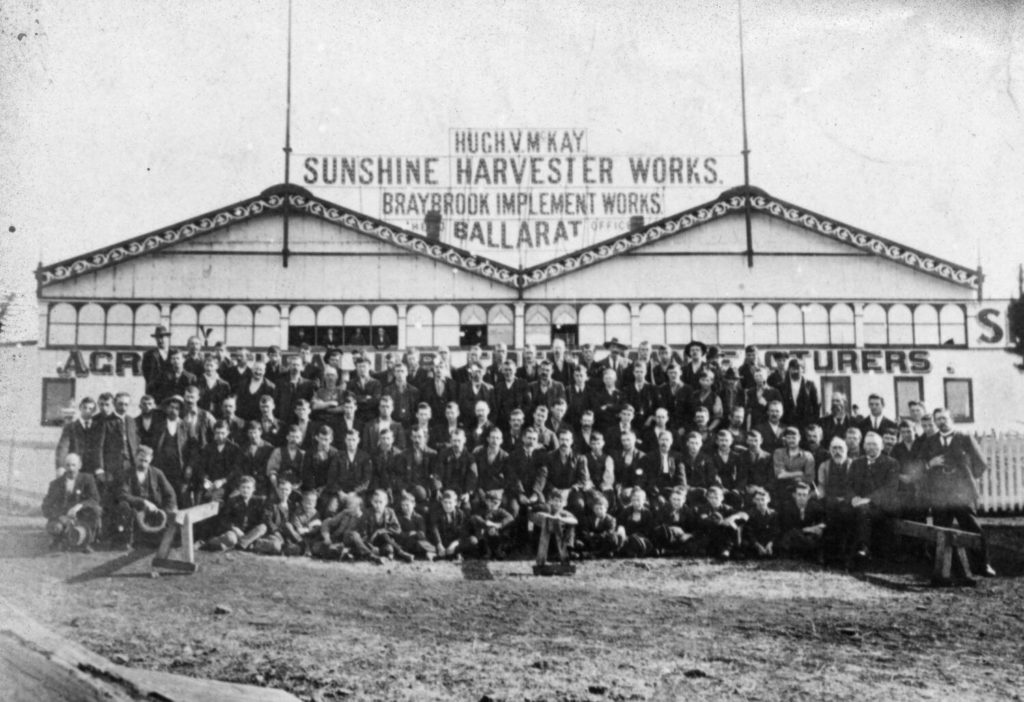
Where was the first place in the world to introduce a minimum wage?
In the late 19the century, unions were involved in a big public debate against conservative forces – you know the types: some big businesses and right-wing politicians.
Conservatives argued that the market should decide the value and conditions of labour.
That meant that wages should basically just be whatever employers said they could afford to pay.
We saw things differently.
We argued that working people are not just workers – we are not commodities – we are people.
Economic rights are human rights – the right to live decently in the society that we, as workers, have built and keep running.
Then something pretty incredible happened.
From 1882 -1883 women textile workers in Victoria went on strike after an employer bid to reduce their pay.

This strike ended as a massive victory for these workers, who won their log of claims, and formed a new union – it was called the Tailoresses Union.
But it also showed just how horrible the wages and conditions in factories were – and public outrage led to a Royal Commission being held.
The Commission found: “Many persons are unable to earn more than a bare subsistence, even though they labour fourteen and sixteen hours a day.”
This Commission made a number of recommendations and these were ultimately made into law by the progressive government of the time.
This law was known as the Factories and Shops Act and it implemented some of the first workplace health and safety standards enshrined in law in Victoria.
But that didn’t stop the debate over the rights and conditions of labour.
In 1895 a new debate broke out over the Factories Act.
Progressive politicians, including former union leaders who had been elected, argued that human rights included economic rights.
They moved to amend the Factories Act to create wage boards that would determine minimum rates of pay.
Then, two trade union backed MPs moved that minimum rates should apply not just to the most vulnerable, but to all workers.
This motion passed, and this implemented the first legal compulsory minimum wage anywhere in the world – right here in Australia in 1896.
And as the historian Marilyn Lake has shown, this was a huge deal. People literally all around the world were talking about this and how amazing it was.
For comparisons sake, Britain’s minimum wage was introduced in 1999 – more than a century after we pioneered the idea.
In 1904, the new Commonwealth Government passed a law, strongly backed by unions, to create a system of arbitration.
This was a court that would oversee industrial disputes.
The first President of this court was a Judge called Henry Bournes Higgins.

Higgins had been a Victorian MP who voted for the minimum wage in 1895.
Higgins oversaw a case in 1907 that came to be known as the Sunshine Harvester Case.
Alfred Deakin became prime minister after Federation and introduced a law that made employers exempt from a tax if they paid fair and reasonable wages.
The owner of the Sunshine Harvester factory – which built combine harvesters in the suburb of Sunshine – applied for the exemption.

The unions representing workers at the Factory objected to this claim, and Higgins decided to use this as a test case for what constituted a fair and reasonable wage.
Higgins decided that a ‘fair and reasonable’ wage should be based on more than what an employer claimed they could afford.
He ruled that there should be a ‘basic wage’ should take into account the costs of living in society and how much a worker requires to take care of their family.
This created a minimum rate of pay that prevented a race-to-the-bottom on wages.
Higgins explained, if your business model did not include paying your workers appropriate wages, you shouldn’t be in business.
It effectively took the Victorian minimum wage to the national level.
This famous decision helped frame Australian industrial relations for decades to come. It wasn’t perfect. It was a product of its time and reflected the sexism and racism of the time. Women workers and First Nations workers had to continue to campaign for wage equality.
Sadly, today, some conservative politicians and some employer groups are repeating those arguments from the 19th century.
It is more important than ever that everyone who believes that workers should have the right to live a decent life to get involved with their union.

